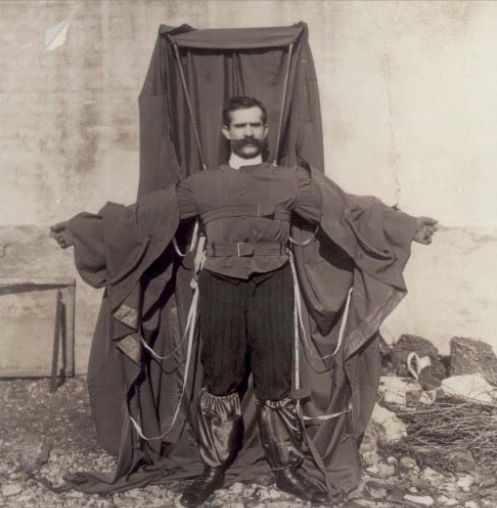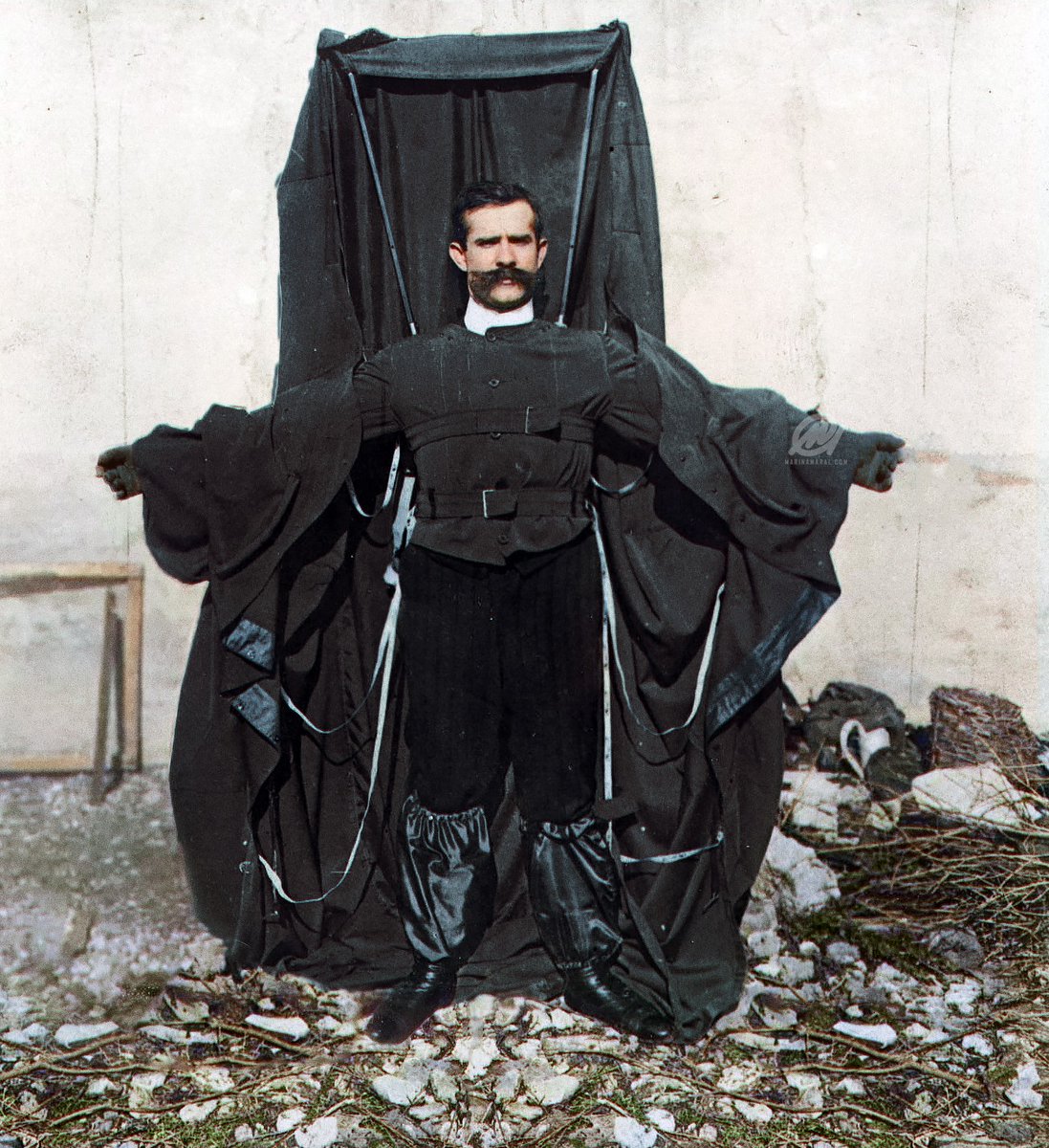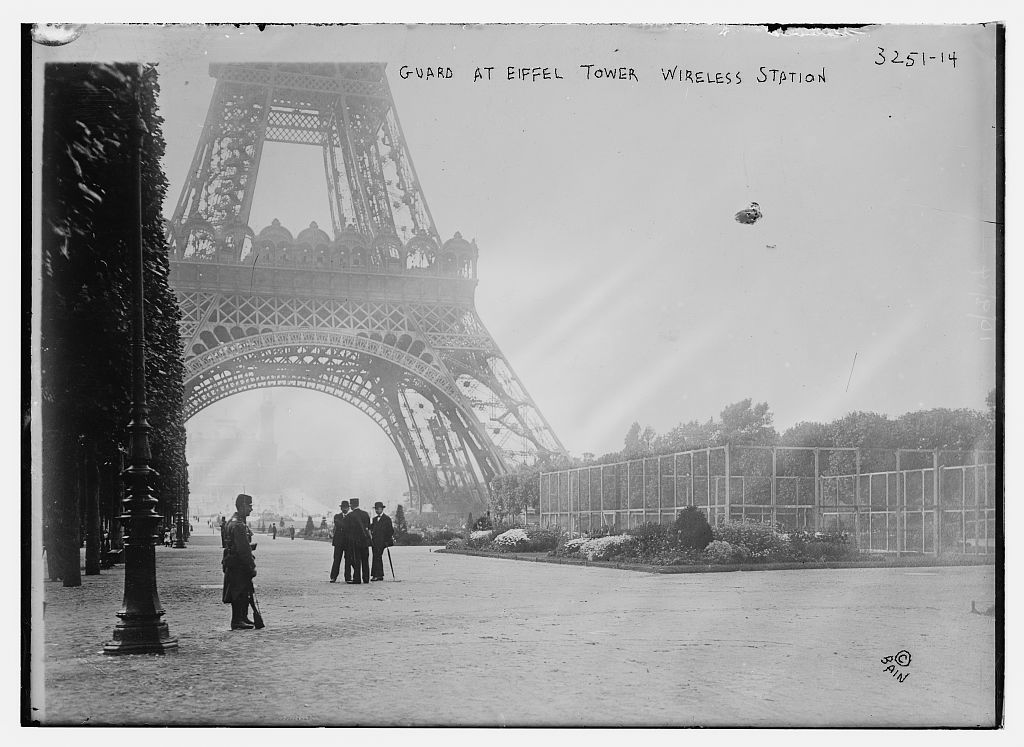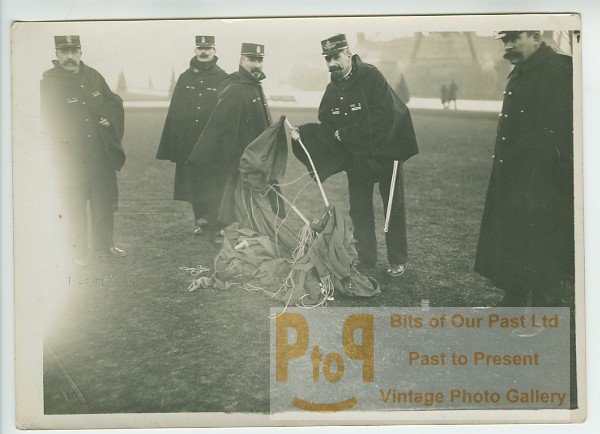
The last known photo ever taken of Franz Reichelt, an Austrian-born French tailor, who is posing here in a parachute of his own design, before jumping off the Eiffel Tower. 



Reichelt attributed the failures of his previous designs at least in part to the short drop distances over which he had conducted his tests, so he was keen to receive permission to experiment from the Eiffel Tower. 

On Sunday, 4 February, at 7:00 a.m., he arrived at the tower by car with two friends. He was already wearing his parachute suit. The weather was cold, with temperatures below 0 °C (32 °F), and there was a stiff breeze blowing across the Champ de Mars.
According to Le Petit Parisien, Reichelt's initial attempt to ascend to the first stage of the tower was blocked by a guard named Gassion, who had witnessed previous unsuccessful dummy drops and feared that Reichelt's attempt would end in disaster.
Despite the guard's resistance, by 8:00 a.m. the matter had been resolved: Reichelt was allowed to mount the tower with his two friends and a cinematographer (another was stationed near the foot of the tower to record the jump from below). 

As he climbed the stairs he paused, turned back to the crowd, raised his hand and wished them a cheery "À bientôt". (See you soon). His friends continued to try to talk him out of the jump, but Reichelt was quite determined.
At 8:22 a.m., observed by a crowd of about 30 journalists and curious onlookers, he readied himself – facing towards the Seine – on a stool placed on a restaurant table next to the interior guardrail of the tower's first deck, a little more than 57 meters above the ground.
After adjusting his apparatus with the assistance of his friends and checking the wind direction by throwing a piece of paper taken from a small book, he placed one foot on the guardrail, hesitated for about 40 seconds, then leapt outwards.
TRIGGER WARNING
Le Petit Parisien reported that his right leg and arm were crushed, his skull and spine broken, and that he was bleeding from his mouth, nose and ears.
Le Figaro noted that his eyes were wide open and dilated.
Le Figaro noted that his eyes were wide open and dilated.
He was already dead by the time the onlookers rushed to his body, but he was taken to the Necker hospital where he was officially pronounced dead, and then on to a police station in the rue Amelie before being returned to his home in rue Gaillon.
Source/more here: en.wikipedia.org/wiki/Franz_Rei…
• • •
Missing some Tweet in this thread? You can try to
force a refresh




















